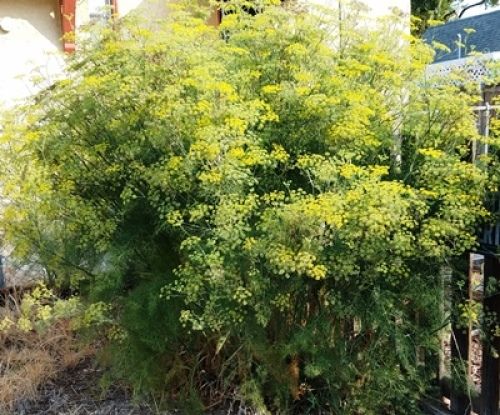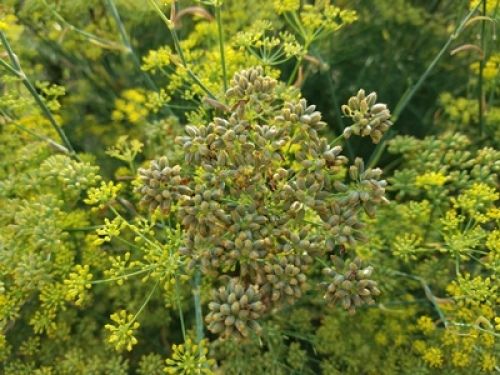
You may have enjoyed fennel without even knowing it.
Fennel leaves have a fresh anise or licorice-like flavor that’s used in cooking to flavor soups and sauces especially for fish dishes. The seeds are popular for eating on their own or flavoring breads, pastries, candies, meats, and Italian foods. Fennel bulbs can be quartered and braised as a side dish or diced and used in fresh salads, combined with sliced chicken for sandwiches, or added to pasta recipes.
Fennel looks like dill, but the taste is completely different. Both herbs have feathery foliage, and they grow umbels of yellow flowers in summer. However, fennel can be used in more ways in the kitchen. The fresh fronds, dried seeds and even the bulbs can all be used in cooking.
If you want to enjoy fennel bulbs, be sure to plant bulbing varieties such as ‘Florence’, ‘Zefa Fino’, ‘Perfection’, or ‘Trieste’.
Fennel is a perennial plant that’s often grown as an annual. These herbs can grow tall, 3 feet or more and even wider, especially if planted in loose, fertile and well-drained soil.
Locate a sunny spot and get started as soon as soil can be worked in spring. Fennel grown for bulbs needs a long season to grow and form. Amend the soil so it’s fertile and well-drained.
If you plan now for next spring’s planting, you’ll be able to start to enjoy the harvest in mid to late summer or about 80 to 100 days.
Wait for the danger of a hard frost to pass before planting fennel from seeds or transplants. Transplants will give you a head start on growing, but you can plant from seeds too.
Sow seeds about ½ inch deep and about 4 inches apart. For large bulbs, thin plants so they have room to grow, about 10 to 12 inches apart. Rows should also be about 1 foot apart. Keep seeds moist because they take between two and three weeks to germinate.
Once plants start to grow, a layer of mulch will help keep soil cool and moist—the best conditions for growing the bulbs.
For good-quality bulbs, fertilize plants every two to three weeks using an all-purpose fertilizer or liquid fish emulsion solution.
Keep track of the number of days for the bulbing variety you planted, and harvest when they’re fully formed. Trim the fronds to the base and carefully lift bulbs from the ground. The tender stalks of bulbing fennel can be used like celery, and the leaves and seeds are delicious too.
Fine Gardening Recommended Products

A.M. Leonard Deluxe Soil Knife & Leather Sheath Combo
Fine Gardening receives a commission for items purchased through links on this site, including Amazon Associates and other affiliate advertising programs.

Razor-Back Potato/Refuse Hook
Fine Gardening receives a commission for items purchased through links on this site, including Amazon Associates and other affiliate advertising programs.

The New Organic Grower, 3rd Edition: A Master's Manual of Tools and Techniques for the Home and Market Gardener, 30th Anniversary Edition
Fine Gardening receives a commission for items purchased through links on this site, including Amazon Associates and other affiliate advertising programs.




















Comments
Log in or create an account to post a comment.
Sign up Log in